As the first whispers of winter begin to weave through the air, there’s nothing quite like the comforting embrace of a warm, flavorful meal to fend off the chill. It’s a season that beckons for a touch of culinary magic, and I’ve found that the best way to answer this call is through the rich tapestry of herbs and spices. They’re not just seasonings; they’re the soul of winter cooking, transforming the simplest ingredients into heartwarming feasts that linger in your memory like a cozy fireside chat.
In my kitchen, the cold months are a time to delve into the spice cabinet and let the aromatic symphony begin. Imagine a stew where rosemary whispers tales of earthy forests or a soup where thyme adds its subtle, minty magic. Picture cinnamon and nutmeg dancing through a pumpkin pie, filling the room with their sweet, spicy perfume. These herbs and spices are like old friends coming together to celebrate the season’s bounty.
Therefore, pull up a chair, and let’s explore the best herbs and spices for winter recipes, each one ready to transform your kitchen into the warmest place to be this winter!
The Magic of Winter Herbs
Let’s start with herbs, the leafy greens of the spice world. While they have their place in every season, there’s something about using them in winter that makes me swoon. Perhaps it’s because a sprinkle of these delicate yet bold flavors can transform any dish into a comforting hug.
🌿 Rosemary: The Evergreen Winter Herb
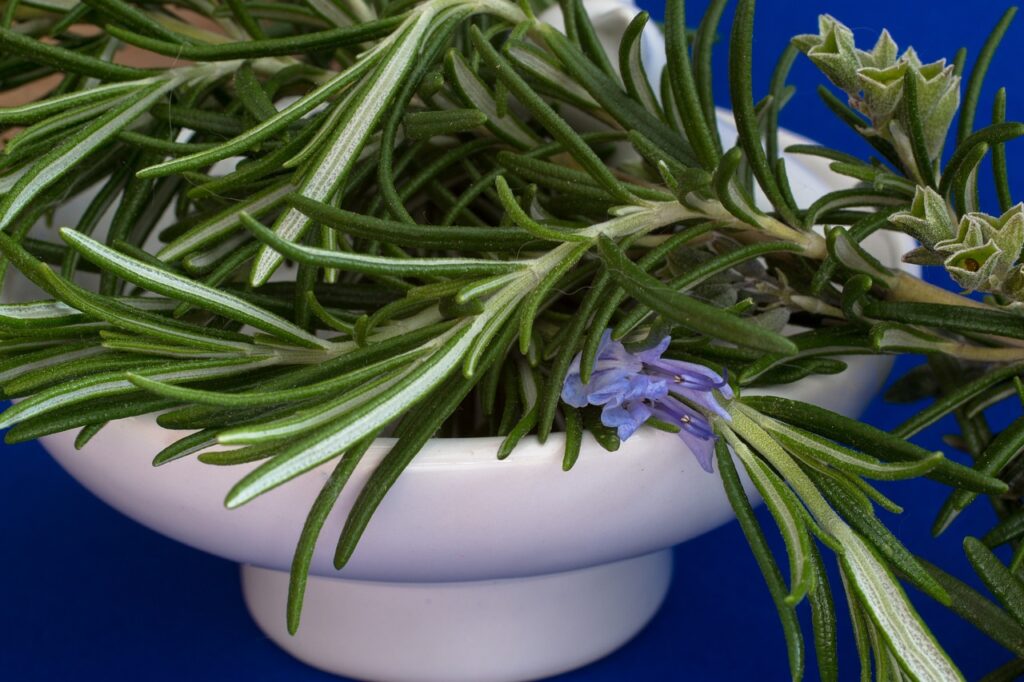
Rosemary is a true evergreen, its needle-like leaves bristling with flavor throughout the year. However, it’s in winter that its pungent, slightly minty taste truly shines. It’s as if the herb, knowing the weather has turned, wants to bring a hint of the forest’s freshness into your home. Its robust aroma, both earthy and slightly lemony, complements hearty winter dishes, making it a favorite in my kitchen during the colder months.
One of my go-to uses for rosemary is with roasted dishes, particularly root vegetables. There’s something about the way it imbues potatoes or carrots with a deep, savory character that’s utterly irresistible. I love adding it to soups, too – a minestrone or chicken noodle soup elevated with a hint of rosemary’s aromatic magic becomes an unforgettable winter meal.
And let’s not forget roasts – a simple roast chicken or lamb adorned with sprigs of rosemary and garlic is a guaranteed showstopper on any winter dinner table. So, as the season unfolds, make sure to keep this fragrant herb close at hand, ready to infuse your winter recipes with its unique charm.
🌿 Thyme: A Touch of Minty Warmth
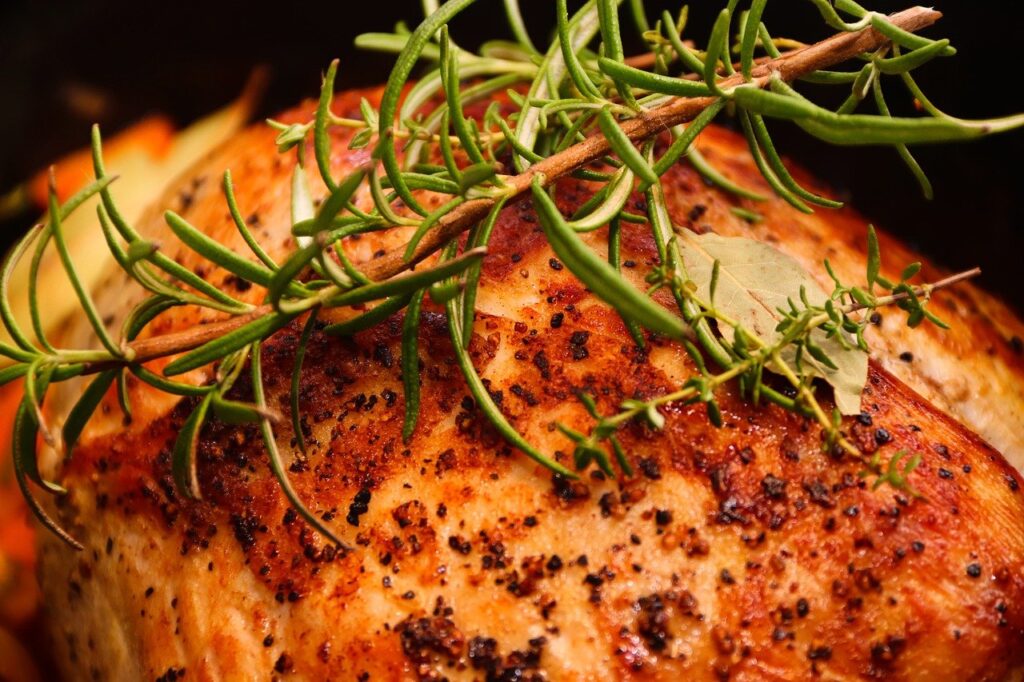
Thyme has a special place in my heart regarding winter cooking. It’s one of those herbs that, while unassuming in appearance, packs an impressive punch of flavor. You’ll find thyme has a subtle, minty flavor profile with slight hints of lemon, clove, and a peppery warmth that beautifully complements winter recipes.
It loves to snuggle up with root vegetables like potatoes and parsnips, adding a depth of flavor that feels like a cozy blanket on a cold day. I’m particularly fond of throwing fresh thyme into my hearty winter stews or roasting it with a mix of winter squash varieties.
The herb’s aromatic qualities partner perfectly with the sweet earthiness of the squash. So, when the winter winds start howling, make sure you have thyme on your side, ready to lend its unique warmth and complexity to your comforting winter fare.
🌿 Sage: The Savory Savior of Winter Feasts
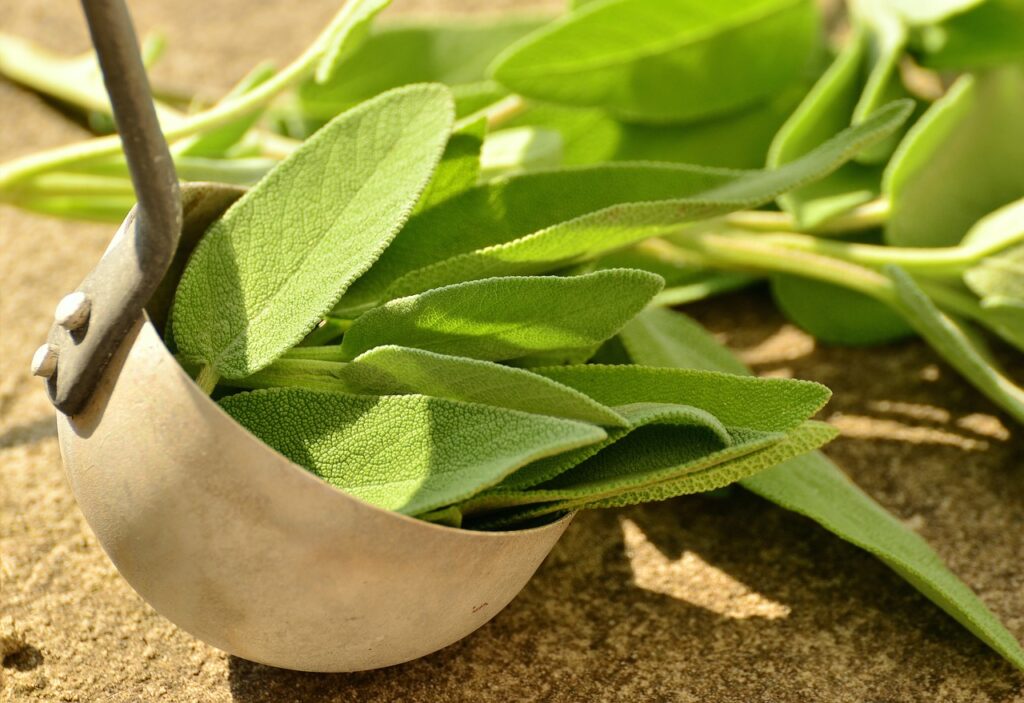
Sage, my savory savior for winter feasts, is a herb that deserves far more credit than it often receives. Robust and slightly peppery, sage brings an earthy, almost pine-like flavor to the table. Its aromatic nature can transform a dish from simple to spectacular with just a few leaves.
Now, in classic recipes, nothing screams ‘winter comfort’ more than a well-made stuffing. Sage is a must in this all-star side dish, its bold flavor cutting through the richness and providing a delightful contrast. And let’s not forget about butternut squash dishes. The robust, savory character of sage perfectly complements the sweetness of the squash.
Whether it’s in a roasted butternut squash soup or a hearty squash and sage risotto, this herb adds depth and complexity that truly elevates the dish.
🌿 Bay Leaves: A Subtle Backbone of Flavor
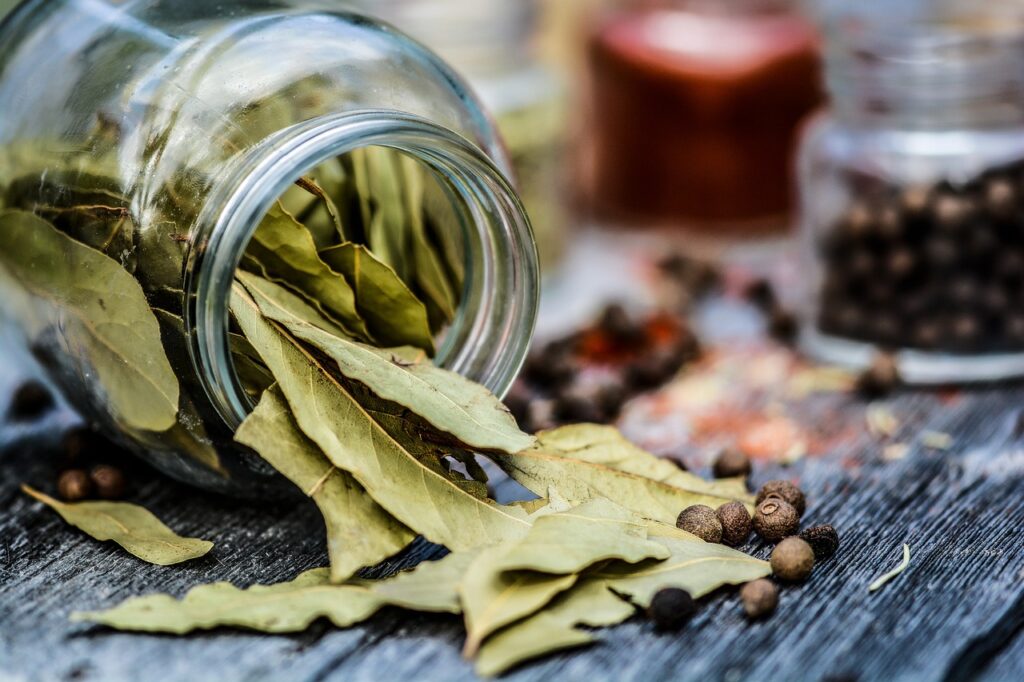
Bay leaves, my subtle secret ingredient, are like the unsung hero of winter dishes. These leaves are a powerhouse of flavor and aroma, delivering a subtle yet profound nuance that forms the backbone of many slow-cooked meals. Picture a hearty winter soup, a warming beef stew, or a pot of deliciously slow-cooked chili – can you imagine them without the undercurrent of flavor that bay leaves provide? I certainly can’t.
The flavor profile of bay leaves is quite unique: slightly floral, with notes of oregano and thyme, and just a hint of bitterness that beautifully balances the richness of winter dishes. The magic of bay leaves unfolds over time, so they’re ideal for incorporating into slow-cooked meals. The longer they simmer, the more flavor they impart.
Remember, though, their strength increases with cooking time, so use them judiciously. I tend to toss one or two leaves into the pot at the beginning of the cooking process, letting them infuse their aroma and flavor into the dish as it simmers away. It’s like waving a magic flavor wand over my winter recipes!
The Warmth of Winter Spices
The perfect winter dish warms you from the inside out. And nothing does this better than a blend of classic winter spices.
🍜 Cinnamon: Sweet and Spicy Comfort
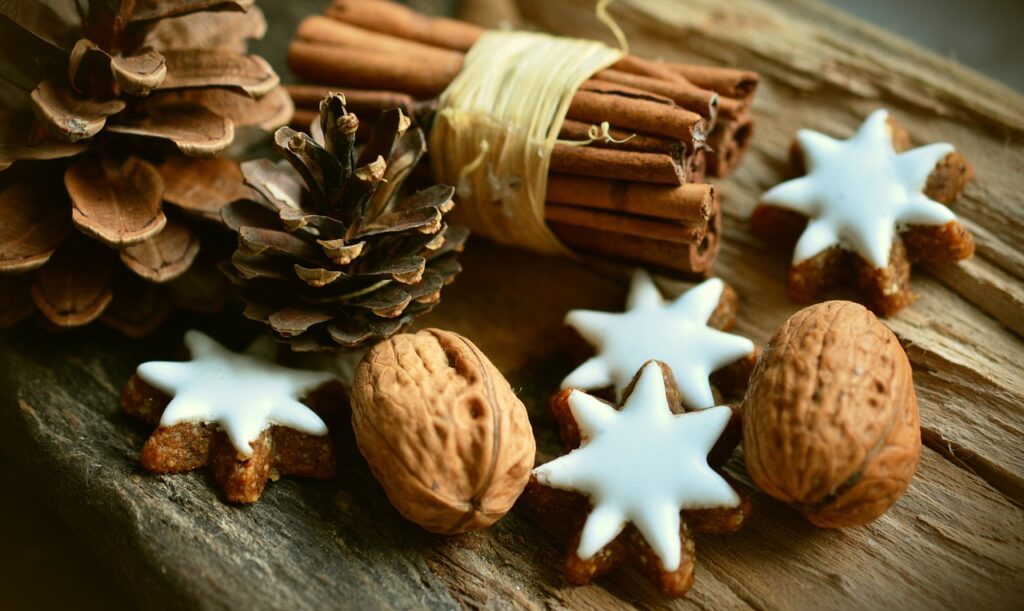
Cinnamon, my all-time favorite, is the quintessential winter spice that brings sweet and spicy comfort to any dish it graces. This robust spice entices the senses with its unmistakable aroma and distinct flavor profile – sweet, warm, and slightly spicy, with hints of clove and citrus. It’s a versatile powerhouse that can hold its own in both sweet and savory creations.
Think cinnamon-spiced apples in a warm, comforting pie or a sprinkling of cinnamon to add a sweet-spicy edge to your morning oatmeal. How about a savory lamb tagine, imbued with the warmth of cinnamon, or a hearty bowl of chili, where cinnamon adds depth and complexity?
Yes, the possibilities are endless with cinnamon. It’s like a comforting hug wrapped in aromatic sweetness, making it an essential spice in my winter recipe repertoire.
🍜 Nutmeg: A Dash of Holiday Spirit
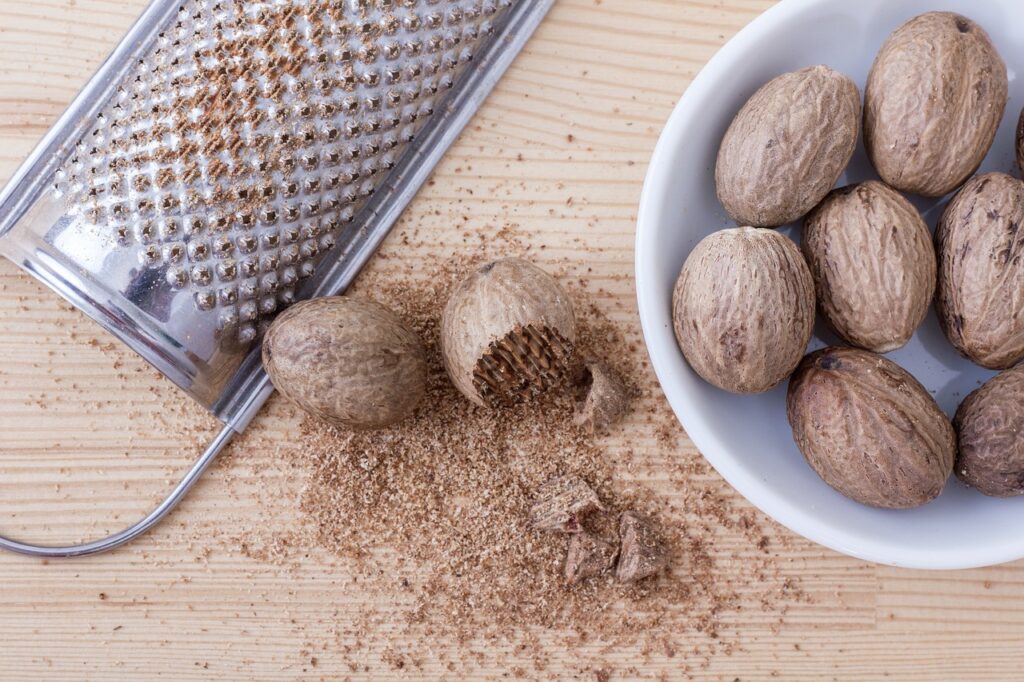
Ah, nutmeg – now, here’s a spice that truly captures the spirit of the holiday season for me! Nutmeg has a unique flavor that is warm and slightly sweet, with subtle notes of clove and pine. It’s a bit exotic yet deeply comforting, which I think makes it perfect for winter recipes.
Nutmeg is my go-to spice when I’m whipping up baked goods – a sprinkle in my cookie batter or a dash in my cake mix, and the kitchen is filled with its intoxicating, festive aroma. It’s not just for sweet dishes, though. Nutmeg works wonders in creamy sauces as well, imparting a delightful warmth that elevates the dish to a whole new level of deliciousness.
Thus, whether it’s a batch of Christmas cookies or a pot of creamy fettuccine Alfredo, a little nutmeg can infuse a touch of holiday spirit into my winter recipes. What a joy it is to cook with nutmeg!
🍜 Cloves: Intense and Aromatic
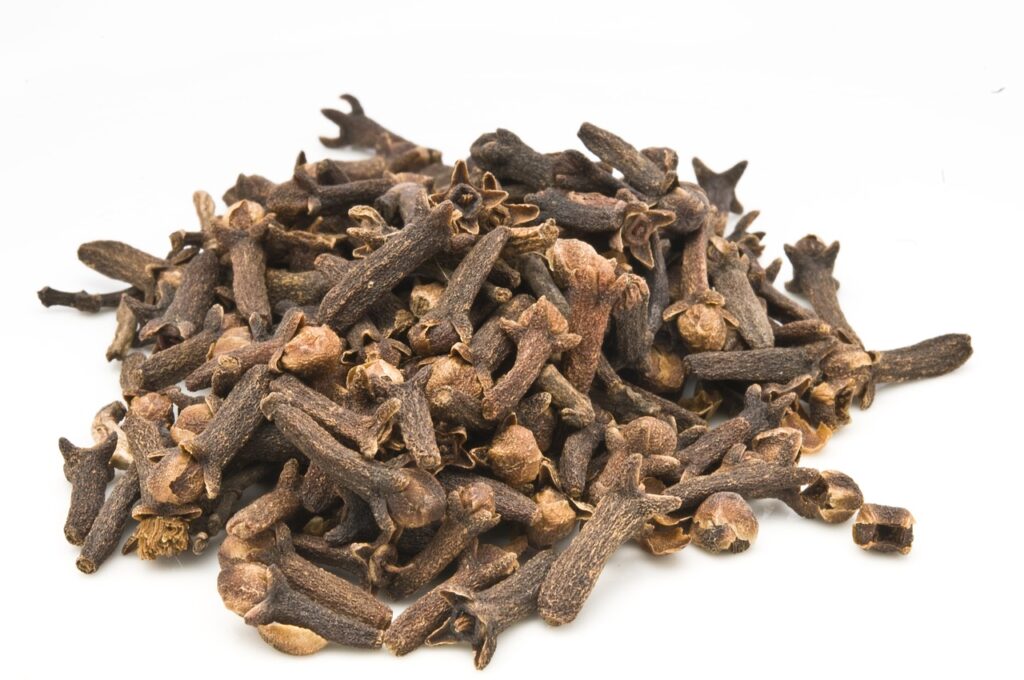
Cloves, with their intense aroma and thought-provoking flavor, always manage to make their presence known. Their taste, a blend of sweetness and bitterness, is synonymous with winter. The pungent essence of cloves, combined with their lingering spiciness, brings a comforting warmth to any dish, making them indispensable in my winter culinary endeavors.
They’re the star of my mulled wines, their deep, warm flavor mingling harmoniously with the rich red wine and citrus slices, creating a drink that warms you from the inside out.
In my spice cakes, cloves add that unexpected kick, a burst of flavor that lingers delightfully on the palate. Not to forget, cloves are a must-add in my marinades. Their robust flavor penetrates the meat, imparting an aromatic depth that is truly remarkable. Cloves, with their bold and assertive character, truly epitomize the flavors of winter, in my book.
🍜 Cardamom: Exotic and Fragrant
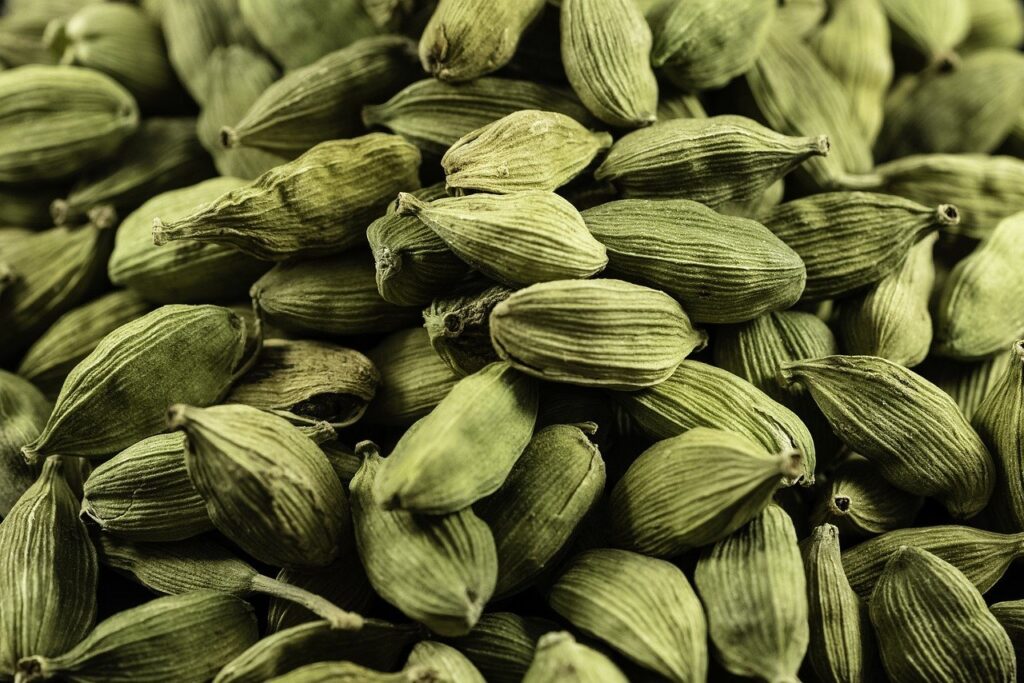
Cardamom, with its exotic, fragrant aroma, is another favorite of mine for winter recipes. The enticing flavor is both sweet and spicy, with an enticingly floral and slightly citrusy aroma. This complexity is difficult to resist. When it comes to traditional winter recipes, this spice shines in Indian dishes, like the comforting Chai tea, where the warm spices beautifully balance its sweetness.
Cardamom-enhanced rice puddings or custards envelop you in a cozy, comforting embrace, making them perfect for those chilly winter nights. But that’s not all; it’s also an exciting spice to use innovatively. I sometimes sprinkle a bit of ground cardamom in my morning coffee for an unexpected kick of flavor. Its bright, complex notes perfectly complement the richness of the coffee, making my standard winter morning brew into a more exotic experience.
In my baking adventures, I add it to gingerbread cookies or spiced bread for a subtle twist on the classic winter treats. Cardamom’s unique flavor profile certainly adds an exotic touch to my winter recipes, making it an integral part of my spice cabinet. It’s amazing how the earthy, lemony flavor can uplift even the simplest of dishes. Truly, cardamom is a winter spice par excellence!
Blending Herbs and Spices: Creating the Perfect Winter Flavor Combinations
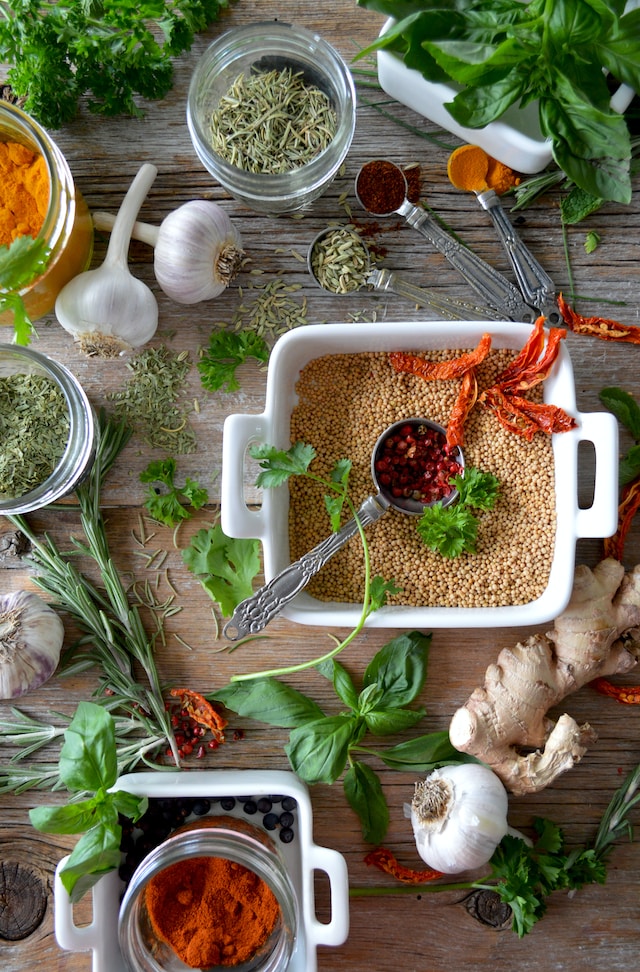
Blending herbs and spices is a bit of an art form, and when done correctly, can bring out the best flavors in your winter recipes. Let me share some of my favorite classic pairings and their culinary applications.
🌱 Rosemary and Thyme
These two are my go-to herbs when I’m roasting winter vegetables or preparing a hearty stew. The pine-like, earthy flavor of rosemary combined with the subtle, slightly minty flavor of thyme creates a robust, heartwarming taste, perfect for a cold winter’s day.
🌱 Cinnamon and Nutmeg
This classic spice duo is a staple in my winter baking. The sweet, woody aroma of cinnamon matches perfectly with the rich, nutty flavor of nutmeg. I often use them in my apple pies, gingerbread cookies, or a hot cup of cider, providing a warm, comforting aroma that fills the house.
🌱 Garlic and Ginger
This dynamic pairing brings a potent flavor kick to my winter recipes. The sharp, spicy notes of ginger blend well with the pungent, slightly sweet flavor of garlic. This combination works wonders in my homemade soups and stir-fry dishes, adding a refreshing zing that combats the winter chill.
🌱 Bay leaves and Cloves
For my slow-cooked dishes, bay leaves and cloves are an absolute must. The subtle, slightly floral flavor of bay leaves pairs incredibly well with the aromatic, sweetly spicy cloves. Together, they create a complex flavor profile that deepens over long cooking times, perfect for a slow-cooked winter pot roast.
🌱 Parsley and Lemon
Lastly, for a bit of freshness amid the rich winter dishes, I often turn to parsley and lemon. The bright, mildly bitter flavor of parsley coupled with the zesty, tangy lemon can enhance the flavor of fish or chicken dishes. Plus, it adds a splash of color that brightens up the winter table.
Tips for Balancing and Blending Flavors
As with any recipe, it’s crucial to find the right balance of flavors when using herbs and spices. Here are a few tips for achieving the perfect blend:
- Start small: It’s always easier to add more seasoning than to take it away. Begin by adding a little bit of your chosen herb or spice, and taste as you go.
- Consider the intensity: Some herbs and spices have a more potent flavor than others. Be mindful of the intensity of the ingredient you are using and adjust accordingly.
- Experiment with combinations: Don’t be afraid to mix and match different herbs and spices! The possibilities are endless, and you never know what delicious flavor combination you may discover.
How to Adjust Proportions For Optimal Taste
Understanding how to adjust proportions for optimal taste can be a bit of an art. It goes beyond just adding more or less of a spice. Here are some ideas to get you started:
- Pay attention to cooking times: Some herbs and spices, especially those in a whole form like bay leaves and cloves, release their flavor gradually. So, if your dish tastes bland, it might just need more time to cook rather than more seasoning.
- Consider the volume of your dish: The quantity of your herbs and spices should correspond to the size of your dish. A larger dish may need more seasoning to ensure that every bite is flavorful.
- Play with contrasts: Combining contrasting flavors can result in an exciting and balanced dish. For example, pairing sweet spices like cinnamon with savory ones like rosemary can create a delightful flavor depth.
- Think about texture: Sometimes, it’s not about the taste but the texture. If your dish feels too heavy, adding some fresh herbs or a squeeze of lemon can lighten it up.
Remember, the best guide is your palate. Taste your dish throughout the cooking process, and trust your instincts. With a little practice, you’ll be a pro at balancing and blending flavors.
Storing Herbs and Spices for Winter
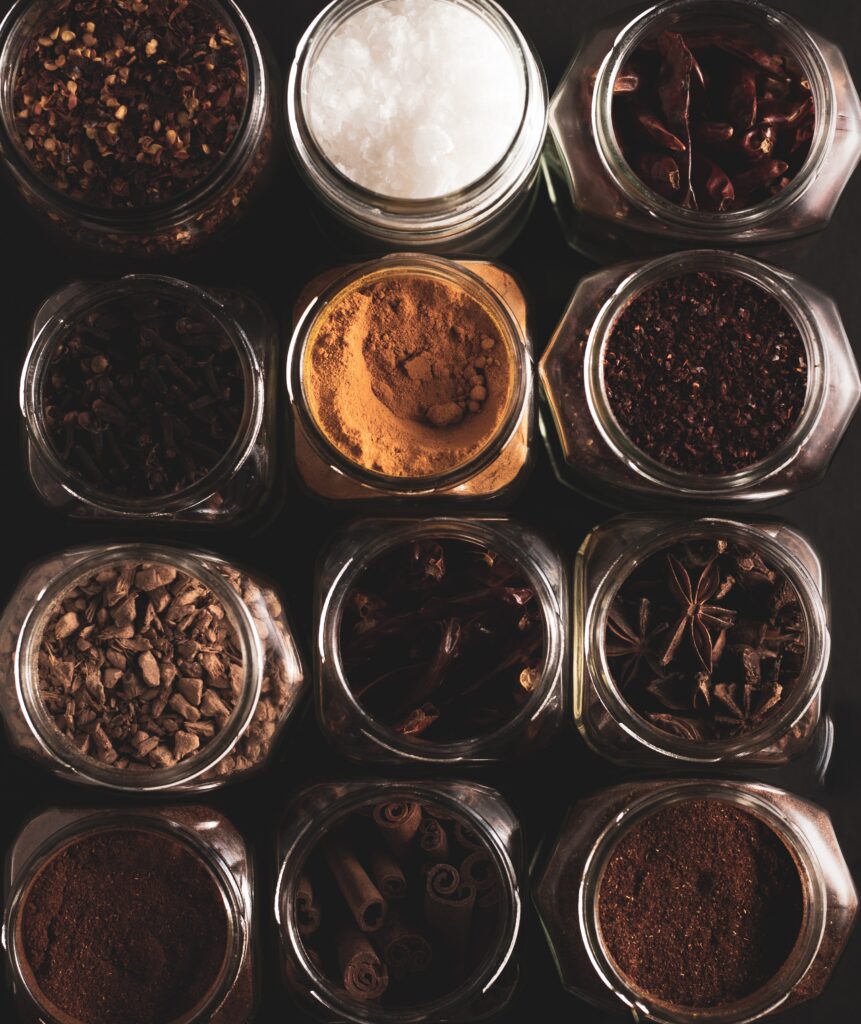
Preserving the freshness and potency of herbs and spices is crucial, especially in the winter months when we rely on them the most to add warmth and richness to our dishes. As a rule of thumb, I always make sure to store my herbs and spices in airtight containers and keep them in a cool, dark, and dry place. Exposure to heat, light, and moisture can speed up the loss of flavor and aroma, so it’s best to avoid storing them above the stove or near the dishwasher.
When organizing my winter spice rack, I like to arrange my herbs and spices according to how frequently I use them. The ones I reach for the most, like cinnamon, nutmeg, and bay leaves, I keep at eye level for easy access. The rest, I arrange alphabetically so I can quickly find what I need while cooking.
Understanding the shelf life of common winter herbs and spices is also important. Generally, whole spices can last up to four years, ground spices up to two to three years, and dried herbs up to one to three years. However, for the best flavor, I recommend replacing your spices annually. Remember, if you open the jar and the aroma doesn’t hit you, it might be time to replace it. Always trust your senses!
DIY: Making Your Own Winter Spice Mixes
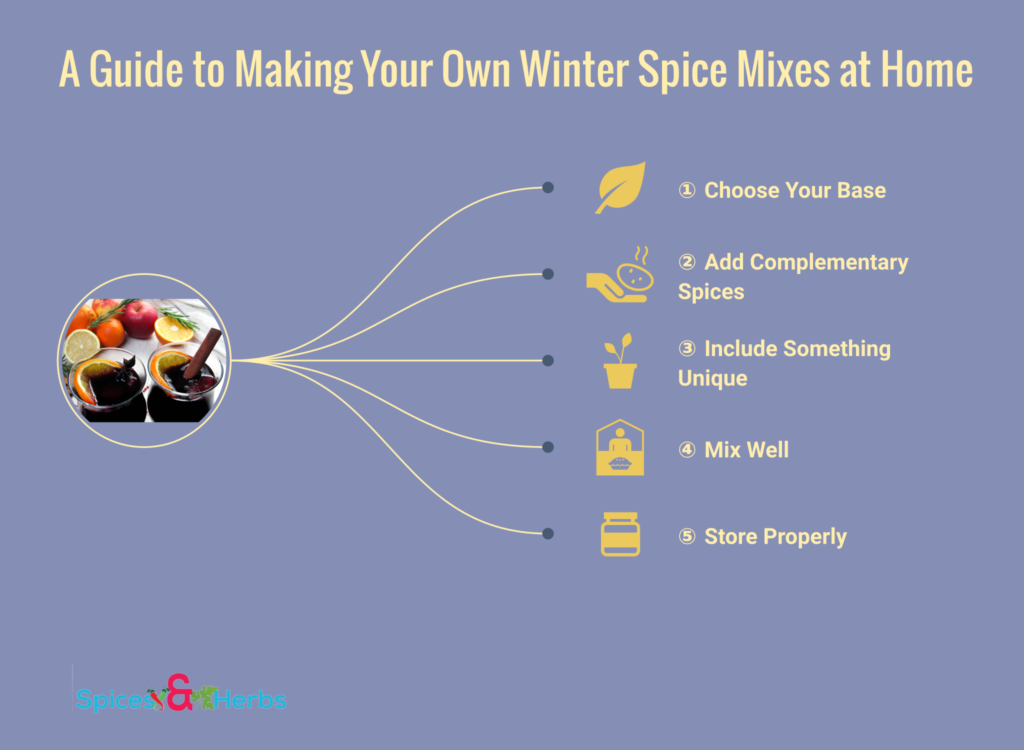
Creating your winter spice mixes is quite simple and can be an enjoyable process. Plus, these personalized blends make for unique and thoughtful gifts. Here’s a step-by-step guide to help you get started:
① Choose Your Base
Start with a base spice that will make up most of your mix. For a winter blend, warming spices like cinnamon or nutmeg are great choices.
② Add Complementary Spices
Next, add spices that complement your base. This could be fragrant cardamom, spicy clove, or sweet allspice. The key is to balance the flavors, so start with a small amount and adjust to taste.
③ Include Something Unique
To make your blend stand out, include a unique spice with an unexpected twist. This could be a pinch of black pepper, a dash of smoked paprika, or a sprinkle of dried orange peel.
④ Mix Well
Once you’ve decided on your spices, add them to a bowl and mix well. Ensure that all the spices are evenly combined.
⑤ Store Properly
Transfer your spice blend to an airtight container for storage. Remember, spices should be stored in a cool, dark place to maintain their flavor and potency.
As for gift ideas, consider filling small mason jars with your custom spice blends and pairing them with a handwritten recipe card. Alternatively, you could make a “winter warming” gift basket filled with your spice mixes, a selection of your favorite winter recipes, and perhaps even a bottle of good-quality olive oil.
Just remember to label each jar with the name of the spice mix and the date it was made. Creating and giving these custom winter spice mixes can be a wonderful way to share a piece of your kitchen with loved ones.
Frequently Asked Questions
Q: How can I make a unique winter spice blend?
You can create a unique winter spice blend by adding a distinctive element to your mix. For example, a sprinkle of dried orange peel or a dash of smoked paprika can add an unexpected twist to your blend.
Q: How should I store my spice blend?
Store your spice blend in an airtight container in a cool, dark place. This helps to maintain the flavor and potency of the spices for longer.
Q: What are some complementary spices for winter blends?
Fragrant cardamom, spicy clove, and sweet allspice are all excellent choices. They balance well with base spices like cinnamon or nutmeg.
Q: How do you properly mix spices for a winter blend?
Add your chosen spices to a bowl and mix well to ensure that all the spices are evenly combined. Start with small amounts and adjust to taste.
Q: Do spices lose their flavor over time?
Yes, over time, spices can lose their potency and flavor. That’s why it’s essential to store them properly and use them within a certain time period.
Conclusion
Cooking with herbs and spices is a surefire way to create tantalizing winter meals that will have your family and friends coming back for more. By properly balancing the flavors of each herb or spice, you can create unique dishes that stand out among the other traditional winter recipes. Not to mention, adding herbs and spices into your everyday cooking can provide diverse health benefits, ranging from anti-inflammatory properties to improved heart health. With so many options available to experiment with, you’ll never run out of motivation or creative ideas for your next winter meal.

